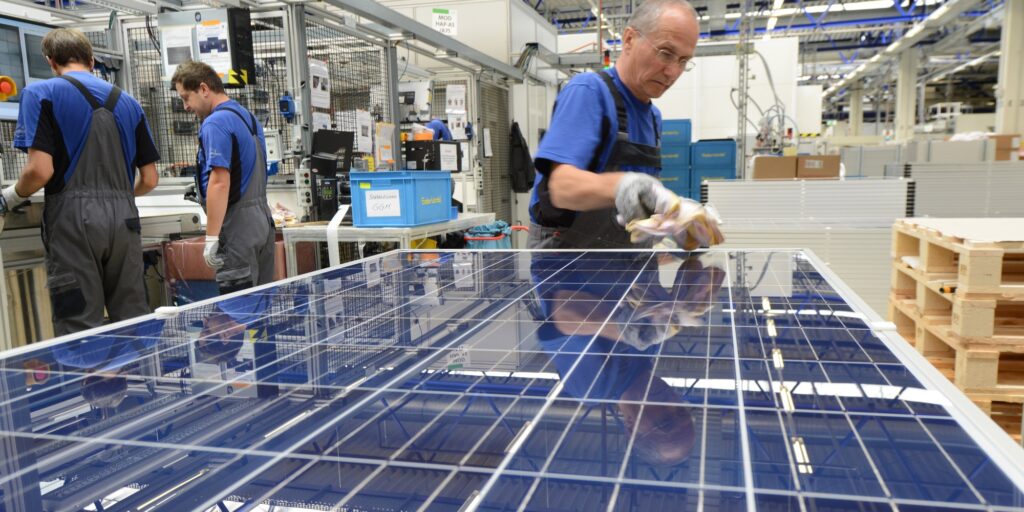Solar cells, also known as photovoltaic (PV) cells, are the devices that convert sunlight into electricity. Over the years, several solar cell technologies have been developed, each with its unique characteristics.
Monocrystalline Silicon Solar Cells
Characteristics: Monocrystalline solar cells are made from a single crystal structure, which results in high efficiency and performance. They have a uniform dark color and rounded edges.
Advantages: High efficiency, long lifespan (25+ years), good performance in low light conditions, and a smaller footprint compared to other technologies.
Disadvantages: Higher manufacturing cost due to the single-crystal production process.
Polycrystalline Silicon Solar Cells
Characteristics: Polycrystalline solar cells are made from multiple crystal structures, which gives them a more textured, speckled appearance.
Advantages: Lower manufacturing cost compared to monocrystalline, relatively high efficiency, and a shorter energy payback time.
Disadvantages: Slightly lower efficiency compared to monocrystalline, reduced performance in high temperatures.
Thin-Film Solar Cells
Characteristics: Thin-film solar cells are made from thin layers of semiconductor materials deposited on various substrates, such as glass or metal.
Advantages: Lower manufacturing cost due to less material usage and simpler production processes, flexible and lightweight, good performance in low light conditions.
Disadvantages: Generally lower efficiency compared to crystalline silicon cells, shorter lifespan, and may require larger surface area for the same power output.
Cadmium Telluride (CdTe) Solar Cells
Characteristics: A type of thin-film solar cell made from cadmium telluride, a compound semiconductor material.
Advantages: High absorption coefficient (efficient at capturing sunlight), relatively low manufacturing cost, and good performance in hot climates.
Disadvantages: Lower efficiency compared to silicon-based cells, potential concerns over the toxicity of cadmium.
Copper Indium Gallium Selenide (CIGS) Solar Cells
Characteristics: Another type of thin-film solar cell made from copper, indium, gallium, and selenium.
Advantages: Reasonably high efficiency, potential for flexible and lightweight applications, and good performance in low light conditions.
Disadvantages: Manufacturing complexity, susceptibility to degradation over time.
Organic Solar Cells (Organic Photovoltaics, OPV)
Characteristics: Organic solar cells use organic materials as the semiconductor, and they can be manufactured using printing processes.
Advantages: Low-cost manufacturing, lightweight, and potential for flexible and transparent applications.
Disadvantages: Lower efficiency compared to inorganic solar cells, shorter lifespan, and currently less commercially mature.
Each solar cell technology has its own set of advantages and limitations, and the choice of technology depends on factors like cost, efficiency requirements, available space, and application-specific considerations. As solar technology continues to advance, new and more efficient solar cell technologies may emerge, further shaping the renewable energy landscape.


